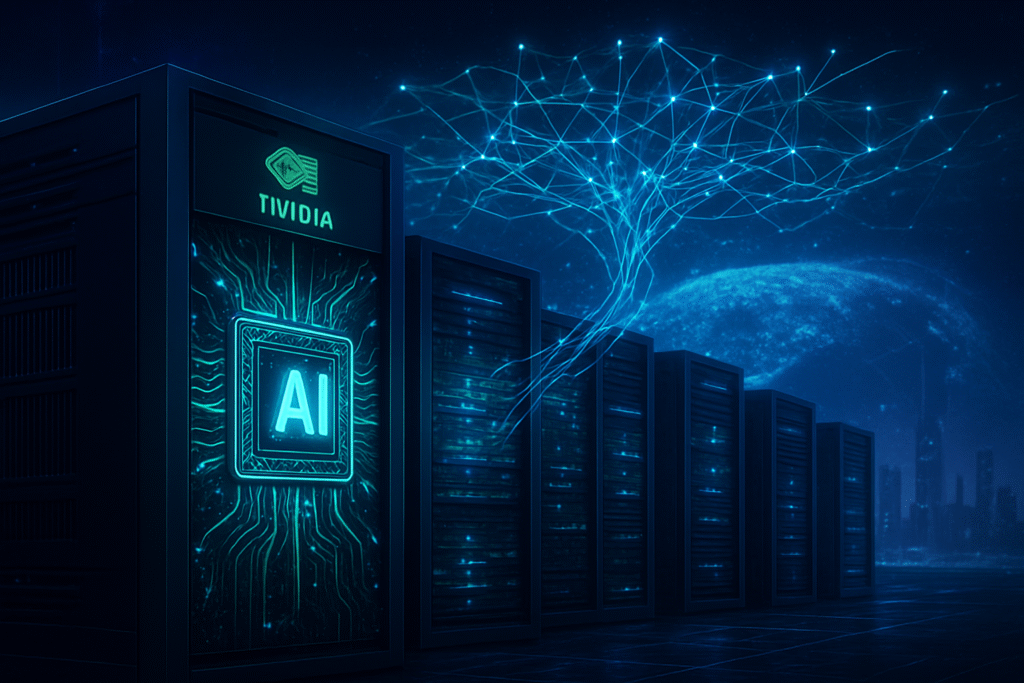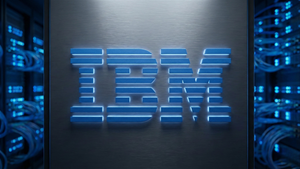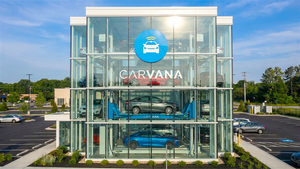
As the calendar turns to November 19, 2025, the technology world holds its breath for Nvidia Corporation's (NASDAQ: NVDA) Q3 FY2026 earnings report. This isn't just another quarterly financial disclosure; it's widely regarded as a pivotal "stress test" for the entire artificial intelligence market, with Nvidia serving as its undisputed bellwether. With market capitalization hovering between $4.5 trillion and $5 trillion, the company's performance and future outlook are expected to send significant ripples across the cloud, semiconductor, and broader AI ecosystems. Investors and analysts are bracing for extreme volatility, with options pricing suggesting a 6% to 8% stock swing in either direction immediately following the announcement. The report's immediate significance lies in its potential to either reaffirm surging confidence in the AI sector's stability or intensify growing concerns about a potential "AI bubble."
The market's anticipation is characterized by exceptionally high expectations. While Nvidia's own guidance for Q3 revenue is $54 billion (plus or minus 2%), analyst consensus estimates are generally higher, ranging from $54.8 billion to $55.4 billion, with some suggesting a need to hit at least $55 billion for a favorable stock reaction. Earnings Per Share (EPS) are projected around $1.24 to $1.26, a substantial year-over-year increase of approximately 54%. The Data Center segment is expected to remain the primary growth engine, with forecasts exceeding $48 billion, propelled by the new Blackwell architecture. However, the most critical factor will be the forward guidance for Q4 FY2026, with Wall Street anticipating revenue guidance in the range of $61.29 billion to $61.57 billion. Anything below $60 billion would likely trigger a sharp stock correction, while a "beat and raise" scenario – Q3 revenue above $55 billion and Q4 guidance significantly exceeding $62 billion – is crucial for the stock rally to continue.
The Engines of AI: Blackwell, Hopper, and Grace Hopper Architectures
Nvidia's market dominance in AI hardware is underpinned by its relentless innovation in GPU architectures. The current generation of AI accelerators, including the Hopper (H100), the Grace Hopper Superchip (GH200), and the highly anticipated Blackwell (B200) architecture, represent significant leaps in performance, efficiency, and scalability, solidifying Nvidia's foundational role in the AI revolution.
The Hopper H100 GPU, launched in 2022, established itself as the gold standard for enterprise AI workloads. Featuring 14,592 CUDA Cores and 456 fourth-generation Tensor Cores, it offers up to 80GB of HBM3 memory with 3.35 TB/s bandwidth. Its dedicated Transformer Engine significantly accelerates transformer model training and inference, delivering up to 9x faster AI training and 30x faster AI inference for large language models compared to its predecessor, the A100 (Ampere architecture). The H100 also introduced FP8 computation optimization and a robust NVLink interconnect providing 900 GB/s bidirectional bandwidth.
Building on this foundation, the Blackwell B200 GPU, unveiled in March 2024, is Nvidia's latest and most powerful offering, specifically engineered for generative AI and large-scale AI workloads. It features a revolutionary dual-die chiplet design, packing an astonishing 208 billion transistors—2.6 times more than the H100. These two dies are seamlessly interconnected via a 10 TB/s chip-to-chip link. The B200 dramatically expands memory capacity to 192GB of HBM3e, offering 8 TB/s of bandwidth, a 2.4x increase over the H100. Its fifth-generation Tensor Cores introduce support for ultra-low precision formats like FP6 and FP4, enabling up to 20 PFLOPS of sparse FP4 throughput for inference, a 5x increase over the H100. The upgraded second-generation Transformer Engine can handle double the model size, further optimizing performance. The B200 also boasts fifth-generation NVLink, delivering 1.8 TB/s per GPU and supporting scaling across up to 576 GPUs with 130 TB/s system bandwidth. This translates to roughly 2.2 times the training performance and up to 15 times faster inference performance compared to a single H100 in real-world scenarios, while cutting energy usage for large-scale AI inference by 25 times.
The Grace Hopper Superchip (GH200) is a unique innovation, integrating Nvidia's Grace CPU (a 72-core Arm Neoverse V2 processor) with a Hopper H100 GPU via an ultra-fast 900 GB/s NVLink-C2C interconnect. This creates a coherent memory model, allowing the CPU and GPU to share memory transparently, crucial for giant-scale AI and High-Performance Computing (HPC) applications. The GH200 offers up to 480GB of LPDDR5X for the CPU and up to 144GB HBM3e for the GPU, delivering up to 10 times higher performance for applications handling terabytes of data.
Compared to competitors like Advanced Micro Devices (NASDAQ: AMD) Instinct MI300X and Intel Corporation (NASDAQ: INTC) Gaudi 3, Nvidia maintains a commanding lead, controlling an estimated 70% to 95% of the AI accelerator market. While AMD's MI300X shows competitive performance against the H100 in certain inference benchmarks, particularly with larger memory capacity, Nvidia's comprehensive CUDA software ecosystem remains its most formidable competitive moat. This robust platform, with its extensive libraries and developer community, has become the industry standard, creating significant barriers to entry for rivals. The B200's introduction has been met with significant excitement, with experts highlighting its "unprecedented performance gains" and "fundamental leap forward" for generative AI, anticipating lower Total Cost of Ownership (TCO) and future-proofing AI workloads. However, the B200's increased power consumption (1000W TDP) and cooling requirements are noted as infrastructure challenges.
Nvidia's Ripple Effect: Shifting Tides in the AI Ecosystem
Nvidia's dominant position and the outcomes of its earnings report have profound implications for the entire AI ecosystem, influencing everything from tech giants' strategies to the viability of nascent AI startups. The company's near-monopoly on high-performance GPUs, coupled with its proprietary CUDA software platform, creates a powerful gravitational pull that shapes the competitive landscape.
Major tech giants like Microsoft Corporation (NASDAQ: MSFT), Amazon.com Inc. (NASDAQ: AMZN), Alphabet Inc. (NASDAQ: GOOGL), and Meta Platforms Inc. (NASDAQ: META) are in a complex relationship with Nvidia. On one hand, they are Nvidia's largest customers, purchasing vast quantities of GPUs to power their cloud AI services and train their cutting-edge large language models. Nvidia's continuous innovation directly enables these companies to advance their AI capabilities and maintain leadership in generative AI. Strategic partnerships are common, with Microsoft Azure, for instance, integrating Nvidia's advanced hardware like the GB200 Superchip, and both Microsoft and Nvidia investing in key AI startups like Anthropic, which leverages Azure compute and Nvidia's chip technology.
However, these tech giants also face a "GPU tax" due to Nvidia's pricing power, driving them to develop their own custom AI chips. Microsoft's Maia 100, Amazon's Trainium and Graviton, Google's TPUs, and Meta's MTIA are all strategic moves to reduce reliance on Nvidia, optimize costs, and gain greater control over their AI infrastructure. This vertical integration signifies a broader strategic shift, aiming for increased autonomy and optimization, especially for inference workloads. Meta, in particular, has aggressively committed billions to both Nvidia GPUs and its custom chips, aiming to "outspend everyone else" in compute capacity. While Nvidia will likely remain the provider for high-end, general-purpose AI training, the long-term landscape could see a more diversified hardware ecosystem with proprietary chips gaining traction.
For other AI companies, particularly direct competitors like Advanced Micro Devices (NASDAQ: AMD) and Intel Corporation (NASDAQ: INTC), Nvidia's continued strong performance makes it challenging to gain significant market share. Despite efforts with their Instinct MI300X and Gaudi AI accelerators, they struggle to match Nvidia's comprehensive tooling and developer support within the CUDA ecosystem. Hardware startups attempting alternative AI chip architectures face an uphill battle against Nvidia's entrenched position and ecosystem lock-in.
AI startups, on the other hand, benefit immensely from Nvidia's powerful hardware and mature development tools, which provide a foundation for innovation, allowing them to focus on model development and applications. Nvidia actively invests in these startups across various domains, expanding its ecosystem and ensuring reliance on its GPU technology. This creates a "vicious cycle" where the growth of Nvidia-backed startups fuels further demand for Nvidia GPUs. However, the high cost of premium GPUs can be a significant financial burden for nascent startups, and the strong ecosystem lock-in can disadvantage those attempting to innovate with alternative hardware or without Nvidia's backing. Concerns have also been raised about whether Nvidia's growth is organically driven or indirectly self-funded through its equity stakes in these startups, potentially masking broader risks in the AI investment ecosystem.
The Broader AI Landscape: A New Industrial Revolution with Growing Pains
Nvidia's upcoming earnings report transcends mere financial figures; it's a critical barometer for the health and direction of the broader AI landscape. As the primary enabler of modern AI, Nvidia's performance reflects the overall investment climate, innovation trajectory, and emerging challenges, including significant ethical and environmental concerns.
Nvidia's near-monopoly in AI chips means that robust earnings validate the sustained demand for AI infrastructure, signaling continued heavy investment by hyperscalers and enterprises. This reinforces investor confidence in the AI boom, encouraging further capital allocation into AI technologies. Nvidia itself is a prolific investor in AI startups, strategically expanding its ecosystem and ensuring these ventures rely on its GPU technology. This period is often compared to previous technological revolutions, such as the advent of the personal computer or the internet, with Nvidia positioned as a key architect of this "new industrial revolution" driven by AI. The shift from CPUs to GPUs for AI workloads, largely pioneered by Nvidia with CUDA in 2006, was a foundational milestone that unlocked the potential for modern deep learning, leading to exponential performance gains.
However, this rapid expansion of AI, heavily reliant on Nvidia's hardware, also brings with it significant challenges and ethical considerations. The environmental impact is substantial; training and deploying large AI models consume vast amounts of electricity, contributing to greenhouse gas emissions and straining power grids. Data centers, housing these GPUs, also require considerable water for cooling. The issue of bias and fairness is paramount, as Nvidia's AI tools, if trained on biased data, can perpetuate societal biases, leading to unfair outcomes. Concerns about data privacy and copyright have also emerged, with Nvidia facing lawsuits regarding the unauthorized use of copyrighted material to train its AI models, highlighting the critical need for ethical data sourcing.
Beyond these, the industry faces broader concerns:
- Market Dominance and Competition: Nvidia's overwhelming market share raises questions about potential monopolization, inflated costs, and reduced access for smaller players and rivals. While AMD and Intel are developing alternatives, Nvidia's established ecosystem and competitive advantages create significant barriers.
- Supply Chain Risks: The AI chip industry is vulnerable to geopolitical tensions (e.g., U.S.-China trade restrictions), raw material shortages, and heavy dependence on a few key manufacturers, primarily in East Asia, leading to potential delays and price hikes.
- Energy and Resource Strain: The escalating energy and water demands of AI data centers are putting immense pressure on global resources, necessitating significant investment in sustainable computing practices.
In essence, Nvidia's financial health is inextricably linked to the trajectory of AI. While it showcases immense growth and innovation fueled by advanced hardware, it also underscores the pressing ethical and practical challenges that demand proactive solutions for a sustainable and equitable AI-driven future.
Nvidia's Horizon: Rubin, Physical AI, and the Future of Compute
Nvidia's strategic vision extends far beyond the current generation of GPUs, with an aggressive product roadmap and a clear focus on expanding AI's reach into new domains. The company is accelerating its product development cadence, shifting to a one-year update cycle for its GPUs, signaling an unwavering commitment to leading the AI hardware race.
In the near term, a Blackwell Ultra GPU is anticipated in the second half of 2025, projected to be approximately 1.5 times faster than the base Blackwell model, alongside an X100 GPU. Nvidia is also committed to a unified "One Architecture" that supports model training and deployment across diverse environments, including data centers, edge devices, and both x86 and Arm hardware.
Looking further ahead, the Rubin architecture, named after astrophysicist Vera Rubin, is slated for mass production in late 2025 and availability in early 2026. This successor to Blackwell will feature a Rubin GPU and a Vera CPU, manufactured by TSMC using a 3 nm process and incorporating HBM4 memory. The Rubin GPU is projected to achieve 50 petaflops in FP4 performance, a significant jump from Blackwell's 20 petaflops. A key innovation is "disaggregated inference," where specialized chips like the Rubin CPX handle context retrieval and processing, while the Rubin GPU focuses on output generation. Leaks suggest Rubin could offer a staggering 14x performance improvement over Blackwell due to advancements like smaller transistor nodes, 3D-stacked chiplet designs, enhanced AI tensor cores, optical interconnects, and vastly improved energy efficiency. A full NVL144 rack, integrating 144 Rubin GPUs and 36 Vera CPUs, is projected to deliver up to 3.6 NVFP4 ExaFLOPS for inference. An even more powerful Rubin Ultra architecture is planned for 2027, expected to double the performance of Rubin with 100 petaflops in FP4. Beyond Rubin, the next architecture is codenamed "Feynman," illustrating Nvidia's long-term vision.
These advancements are set to power a multitude of future applications:
- Physical AI and Robotics: Nvidia is heavily investing in autonomous vehicles, humanoid robots, and automated factories, envisioning billions of robots and millions of automated factories. They have unveiled an open-source humanoid foundational model to accelerate robot development.
- Industrial Simulation: New AI physics models, like the Apollo family, aim to enable real-time, complex industrial simulations across various sectors.
- Agentic AI: Jensen Huang has introduced "agentic AI," focusing on new reasoning models for longer thought processes, delivering more accurate responses, and understanding context across multiple modalities.
- Healthcare and Life Sciences: Nvidia is developing biomolecular foundation models for drug discovery and intelligent diagnostic imaging, alongside its Bio LLM for biological and genetic research.
- Scientific Computing: The company is building AI supercomputers for governments, combining traditional supercomputing and AI for advancements in manufacturing, seismology, and quantum research.
Despite this ambitious roadmap, significant challenges remain. Power consumption is a critical concern, with AI-related power demand projected to rise dramatically. The Blackwell B200 consumes up to 1,200W, and the GB200 is expected to consume 2,700W, straining data center infrastructure. Nvidia argues its GPUs offer overall power and cost savings due to superior efficiency. Mitigation efforts include co-packaged optics, Dynamo virtualization software, and BlueField DPUs to optimize power usage. Competition is also intensifying from rival chipmakers like AMD and Intel, as well as major cloud providers developing custom AI silicon. AI semiconductor startups like Groq and Positron are challenging Nvidia by emphasizing superior power efficiency for inference chips. Geopolitical factors, such as U.S. export restrictions, have also limited Nvidia's access to crucial markets like China.
Experts widely predict Nvidia's continued dominance in the AI hardware market, with many anticipating a "beat and raise" scenario for the upcoming earnings report, driven by strong demand for Blackwell chips and long-term contracts. CEO Jensen Huang forecasts $500 billion in chip orders for 2025 and 2026 combined, indicating "insatiable AI appetite." Nvidia is also reportedly moving to sell entire AI servers rather than just individual GPUs, aiming for deeper integration into data center infrastructure. Huang envisions a future where all companies operate "mathematics factories" alongside traditional manufacturing, powered by AI-accelerated chip design tools, solidifying AI as the most powerful technological force of our time.
A Defining Moment for AI: Navigating the Future with Nvidia at the Helm
Nvidia's upcoming Q3 FY2026 earnings report on November 19, 2025, is more than a financial event; it's a defining moment that will offer a crucial pulse check on the state and future trajectory of the artificial intelligence industry. As the undisputed leader in AI hardware, Nvidia's performance will not only dictate its own market valuation but also significantly influence investor sentiment, innovation, and strategic decisions across the entire tech landscape.
The key takeaways from this high-stakes report will revolve around several critical indicators: Nvidia's ability to exceed its own robust guidance and analyst expectations, particularly in its Data Center revenue driven by Hopper and the initial ramp-up of Blackwell. Crucially, the forward guidance for Q4 FY2026 will be scrutinized for signs of sustained demand and diversified customer adoption beyond the core hyperscalers. Evidence of flawless execution in the production and delivery of the Blackwell architecture, along with clear commentary on the longevity of AI spending and order visibility into 2026, will be paramount.
This moment in AI history is significant because Nvidia's technological advancements are not merely incremental; they are foundational to the current generative AI revolution. The Blackwell architecture, with its unprecedented performance gains, memory capacity, and efficiency for ultra-low precision computing, represents a "fundamental leap forward" that will enable the training and deployment of ever-larger and more sophisticated AI models. The Grace Hopper Superchip further exemplifies Nvidia's vision for integrated, super-scale computing. These innovations, coupled with the pervasive CUDA software ecosystem, solidify Nvidia's position as the essential infrastructure provider for nearly every major AI player.
However, the rapid acceleration of AI, powered by Nvidia, also brings a host of long-term challenges. The escalating power consumption of advanced GPUs, the environmental impact of large-scale data centers, and the ethical considerations surrounding AI bias, data privacy, and intellectual property demand proactive solutions. Nvidia's market dominance, while a testament to its innovation, also raises concerns about competition and supply chain resilience, driving tech giants to invest heavily in custom AI silicon.
In the coming weeks and months, the market will be watching for several key developments. Beyond the immediate earnings figures, attention will turn to Nvidia's commentary on its supply chain capacity, especially for Blackwell, and any updates regarding its efforts to address the power consumption challenges. The competitive landscape will be closely monitored as AMD and Intel continue to push their alternative AI accelerators, and as cloud providers expand their custom chip deployments. Furthermore, the broader impact on AI investment trends, particularly in startups, and the industry's collective response to the ethical and environmental implications of accelerating AI will be crucial indicators of the AI revolution's sustainable path forward. Nvidia remains at the helm of this transformative journey, and its trajectory will undoubtedly chart the course for AI for years to come.
This content is intended for informational purposes only and represents analysis of current AI developments.
TokenRing AI delivers enterprise-grade solutions for multi-agent AI workflow orchestration, AI-powered development tools, and seamless remote collaboration platforms.
For more information, visit https://www.tokenring.ai/.






